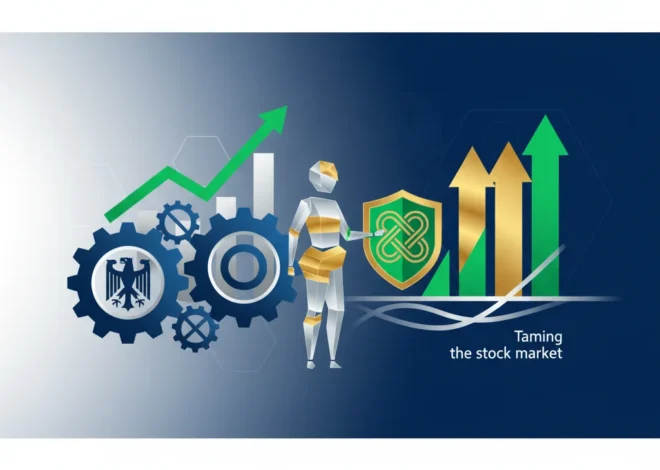
The 16Arlington Playbook: Decoding the ROI of Strategic Partnerships in a Volatile Economy
The Unlikely Blueprint for Financial Success Hidden in a Party Dress
In the fast-paced world of high finance and disruptive technology, inspiration can strike from the most unexpected quarters. While investors and executives are typically engrossed in stock market fluctuations and economic forecasts, a recent announcement from the London fashion scene offers a surprisingly potent lesson in modern business strategy. The Financial Times recently spotlighted a collaboration between the contemporary luxury brand 16Arlington and the legacy of a ’70s design icon, heralding it as a potentially “glamorous party-dress collab.” While the article focuses on sequins and silhouettes, the underlying strategic framework provides a powerful blueprint for any industry, from banking to fintech.
This collaboration is more than just a fashion moment; it’s a masterclass in leveraging heritage to drive future growth, a concept we’re seeing play out across the global economy. It demonstrates how pairing the agility of a modern entity with the established trust of a legacy brand can create a sum far greater than its parts. For investors, finance professionals, and business leaders, the parallels are striking and the takeaways invaluable. This isn’t about clothing; it’s about the architecture of value creation in an era of unprecedented change. How can a ’70s aesthetic revival inform your investment portfolio? What can a party dress teach us about successful fintech-bank partnerships? Let’s deconstruct the financial technology of glamour.
The Anatomy of a Power Partnership: Blending Legacy and Innovation
At its core, the 16Arlington initiative is a strategic alliance. The brand, known for its modern, feather-trimmed opulence, is tapping into the DNA of a bygone era celebrated for its confidence and impact. This isn’t simply an act of nostalgia; it’s a calculated business decision designed to achieve specific outcomes: expanding market reach, deepening brand narrative, and creating a product line with a multi-generational appeal. The ’70s aesthetic provides a foundation of proven appeal, while 16Arlington provides the modern execution and distribution channel.
This model is a mirror image of the most successful strategies emerging in the financial sector today. Consider the symbiotic relationship between agile fintech startups and established banking institutions. The fintech brings cutting-edge financial technology, a user-centric design philosophy, and the ability to innovate at speed. The established bank brings a massive customer base, regulatory compliance, and something even more valuable: decades, or even centuries, of accumulated trust. One provides the engine of innovation; the other provides the chassis of stability and scale.
Investors are increasingly rewarding companies that master this balancing act. A standalone neobank might struggle for profitability and trust, while a legacy bank might be perceived as a dinosaur in the digital age. But a legacy bank that successfully integrates or partners with a fintech to offer seamless mobile banking, innovative trading platforms, or blockchain-based services creates a formidable competitive advantage. This partnership model de-risks innovation for the incumbent and provides a path to scale for the disruptor—a classic win-win that the stock market understands and values.
The 0 Billion Meeting Problem: How One CEO's War on Wasted Time is a Major Signal for Investors
“Result-Wear”: Shifting from Vanity Metrics to Tangible ROI
The Financial Times article uses a fascinating term to describe the ’70s design ethos: “result-wear.” This wasn’t just about looking good; it was about making an impact, achieving a result. In business and investing, this concept is more relevant than ever. For too long, companies, particularly in the tech sector, have been lauded for “vanity metrics”—user growth, app downloads, social media engagement—without a clear path to profitability. The current economic climate, however, has forced a market-wide pivot towards “result-wear.”
Investors are no longer impressed by growth at all costs. They are demanding a clear return on investment (ROI), sustainable profit margins, and robust cash flow. The “result-wear” philosophy means every initiative, whether a marketing campaign, a technology investment, or a strategic partnership, must be tied to measurable financial outcomes. It’s the difference between a flashy Super Bowl ad that generates buzz and a targeted digital marketing campaign that demonstrably lowers customer acquisition cost and increases lifetime value.
This table illustrates the critical shift in focus for modern businesses and the investors who evaluate them:
| Vanity-Driven Metrics (The “Look”) | Result-Driven Metrics (The “Result-Wear”) |
|---|---|
| Website Traffic / Page Views | Conversion Rate / Customer Acquisition Cost (CAC) |
| Social Media Follower Count | Customer Lifetime Value (CLV) / Churn Rate |
| Number of App Downloads | Monthly Active Users (MAU) & Average Revenue Per User (ARPU) |
| Press Mentions / Brand “Buzz” | Net Profit Margin / Return on Investment (ROI) |
For finance professionals, this means scrutinizing balance sheets and income statements with renewed vigor. For business leaders, it means instilling a culture of accountability where every department, from marketing to engineering, understands its direct impact on the bottom line. The era of speculative, story-driven valuations is giving way to a new era of fundamental economics, where tangible results are the only currency that matters.
The Million-Pound Tip-Off: Is the UK Launching a Wall Street-Style War on Tax Fraud?
The Economic Underpinnings: Trading on Trust and Technology
Why revive a ’70s aesthetic now? Because in times of economic uncertainty and rapid change, consumers and investors alike gravitate towards the familiar and the trusted. Nostalgia is not just a feeling; it’s a powerful economic force. It represents a known quantity, a period of perceived stability or authenticity. This collaboration taps into that sentiment, offering the comfort of the past repackaged for the present.
In the world of finance, this translates directly to the value of brand equity and trust. A bank that has weathered multiple economic cycles possesses an intangible asset that a new fintech can’t easily replicate. This is why a prudent investment strategy often involves a mix of high-growth, disruptive stocks and stable, blue-chip companies. The latter provides the bedrock of trust and reliability, much like the ’70s design provides the foundational appeal for 16Arlington’s new collection.
This principle even extends to the most advanced financial technology. Consider blockchain. While it’s a cutting-edge technology, its core value proposition is a return to first principles: decentralization, transparency, and ownership—ideas that are, in their own way, a form of “nostalgia” for a simpler, more direct system of exchange. The “glamour” of an NFT or a DeFi protocol is ultimately built on the robust, transparent, and trustworthy “fabric” of the underlying blockchain. Without that foundational integrity, the entire structure collapses. Investors who understood this were able to differentiate between hype-driven projects and those with sustainable, long-term utility during the last market cycle.
Ultimately, the most successful ventures, whether in fashion or finance, are those that skillfully weave together the threads of past and future. They respect the principles that build enduring trust while relentlessly pursuing the innovations that drive progress and efficiency. The glamour is in the final product, but the real value is in the thoughtful engineering that combines the best of both worlds.
The Bouzouki Portfolio: What a Niche Music Shop Teaches Us About Modern Investing
Conclusion: The Universal Lesson in Strategic Value Creation
What begins as a story about a party dress ultimately reveals a sophisticated model for success in today’s complex economy. The 16Arlington collaboration serves as a potent metaphor for the strategic imperatives facing every modern business and investor. The key takeaways are clear and actionable:
- Embrace Symbiotic Partnerships: Seek out collaborations that blend agility with stability, and innovation with trust. The most resilient growth comes from combining complementary strengths.
- Demand “Result-Wear”: Shift focus from vanity metrics to tangible, measurable ROI. In a discerning market, only real performance and profitability will be rewarded.
- Monetize Heritage: Recognize that history, brand trust, and legacy are not liabilities but valuable assets that can be leveraged to de-risk innovation and build lasting customer relationships.
- Invest in the Foundation: Remember that the most glamorous, user-facing products—be it a trading app or a party dress—are only as strong as the underlying technology and principles they are built upon.
For investors navigating the stock market, these principles offer a new lens through which to evaluate a company’s long-term potential. For business leaders shaping corporate strategy, they provide a roadmap for building a resilient, adaptable, and valuable enterprise. The most glamorous collaboration of 2025 might just be the one between timeless business wisdom and transformative financial technology.


